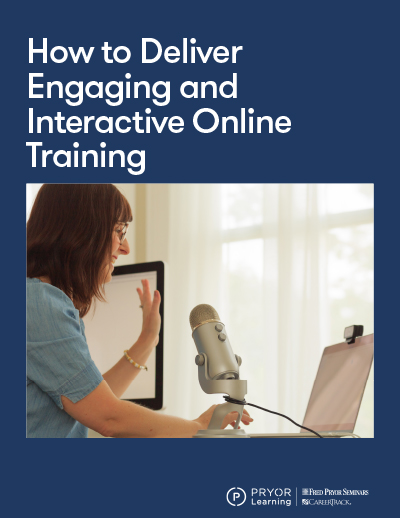An interactive learning session on how to keep participants informed, learning and communicating during an online training event
The pandemic has changed the landscape for training your employees and communicating with customers. Training is paramount for productive, effective and cohesive teams and organizations. With technology you can remotely train your team and communicate with customers through a variety of different modalities. During this 3.5-hour interactive learning seminar we’ll discuss how to keep virtual audiences engaged, interested and active.
The new normal has demanded organizations change the way they do things. From how new and existing employees are trained to how organizations work with their customers, the interaction of face-to-face training is hard to emulate in this new remote and virtual world. Overcoming these changes is vital to the success and productivity of every organization. With so many online training tools, distractions and everyday life. How do you keep your audience engaged, attentive and participating all the way through an online event? Join this training session to learn the answers to these questions and more.

An interactive learning session on how to keep participants informed, learning and communicating during an online training event
The pandemic has changed the landscape for training your employees and communicating with customers.
Download Brochure- How to engage individuals by understanding the major learning styles.
- Creative tips for using polls and questions to keep learners focused—and retaining—the training material.
- Learn how using a variety of tools (video, workbook exercises, and activities), helps to keep participants interested, active and engaged.
- Draw in and captivate your audience using non-verbal cues through your camera.
- Discover strategies and best practices that help to include your audience’s participation in the online training.
- Ways to help the audience adapt and embrace ever-changing virtual environments.
- Strategies for supporting and supplementing the online training through handouts and follow-up.
- Differences between how remote employees and customers engage in online learning.
Trainers, teachers and professors, managers, directors, supervisors, team leaders, executives, personnel, as well as HR and L&D professionals, in addition to anyone who is using an online platform to provide virtual distance training to your organization. Anyone responsible for making decisions regarding your organization’s training programs, curriculum and delivery.


